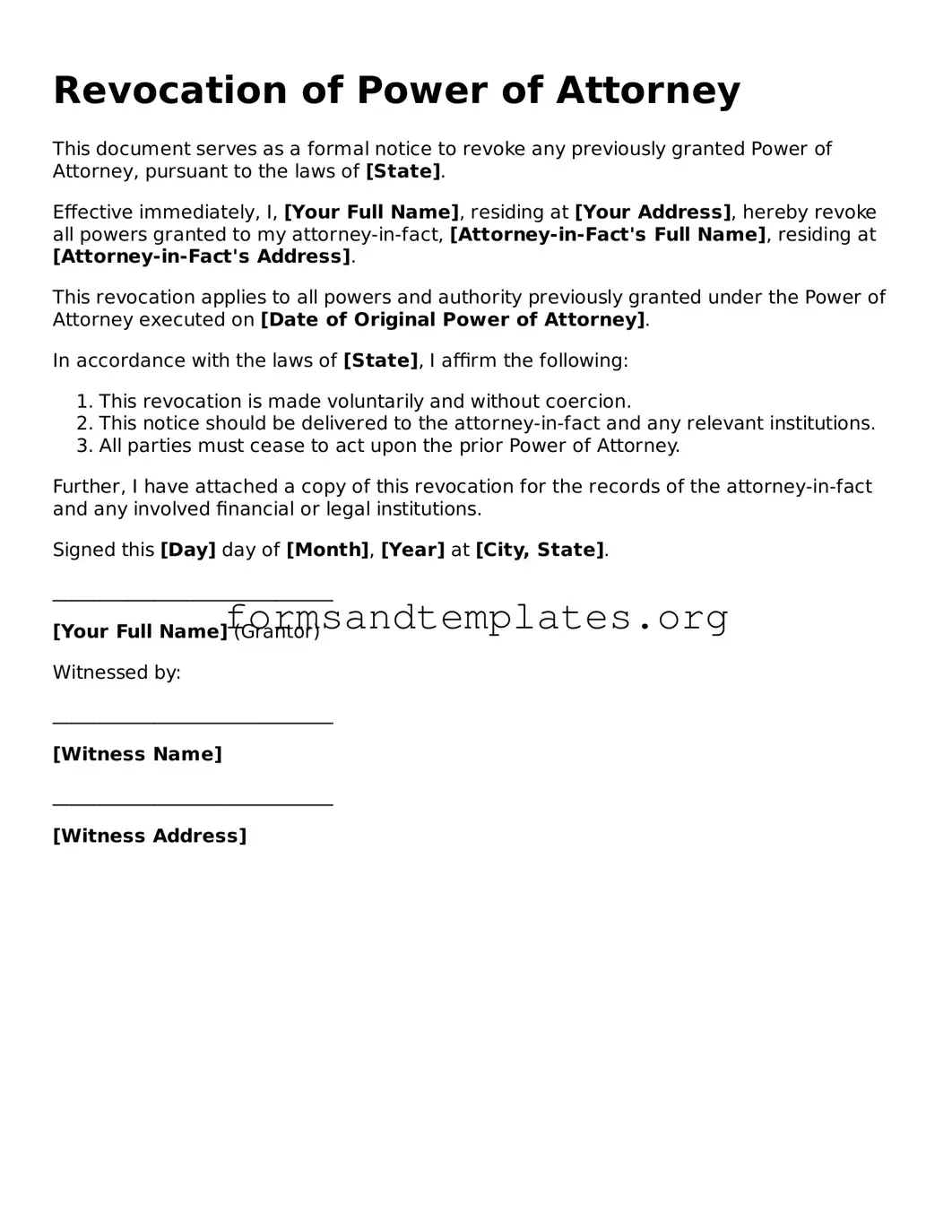Revocation of Power of Attorney
This document serves as a formal notice to revoke any previously granted Power of Attorney, pursuant to the laws of [State].
Effective immediately, I, [Your Full Name], residing at [Your Address], hereby revoke all powers granted to my attorney-in-fact, [Attorney-in-Fact's Full Name], residing at [Attorney-in-Fact's Address].
This revocation applies to all powers and authority previously granted under the Power of Attorney executed on [Date of Original Power of Attorney].
In accordance with the laws of [State], I affirm the following:
- This revocation is made voluntarily and without coercion.
- This notice should be delivered to the attorney-in-fact and any relevant institutions.
- All parties must cease to act upon the prior Power of Attorney.
Further, I have attached a copy of this revocation for the records of the attorney-in-fact and any involved financial or legal institutions.
Signed this [Day] day of [Month], [Year] at [City, State].
______________________________
[Your Full Name] (Grantor)
Witnessed by:
______________________________
[Witness Name]
______________________________
[Witness Address]
